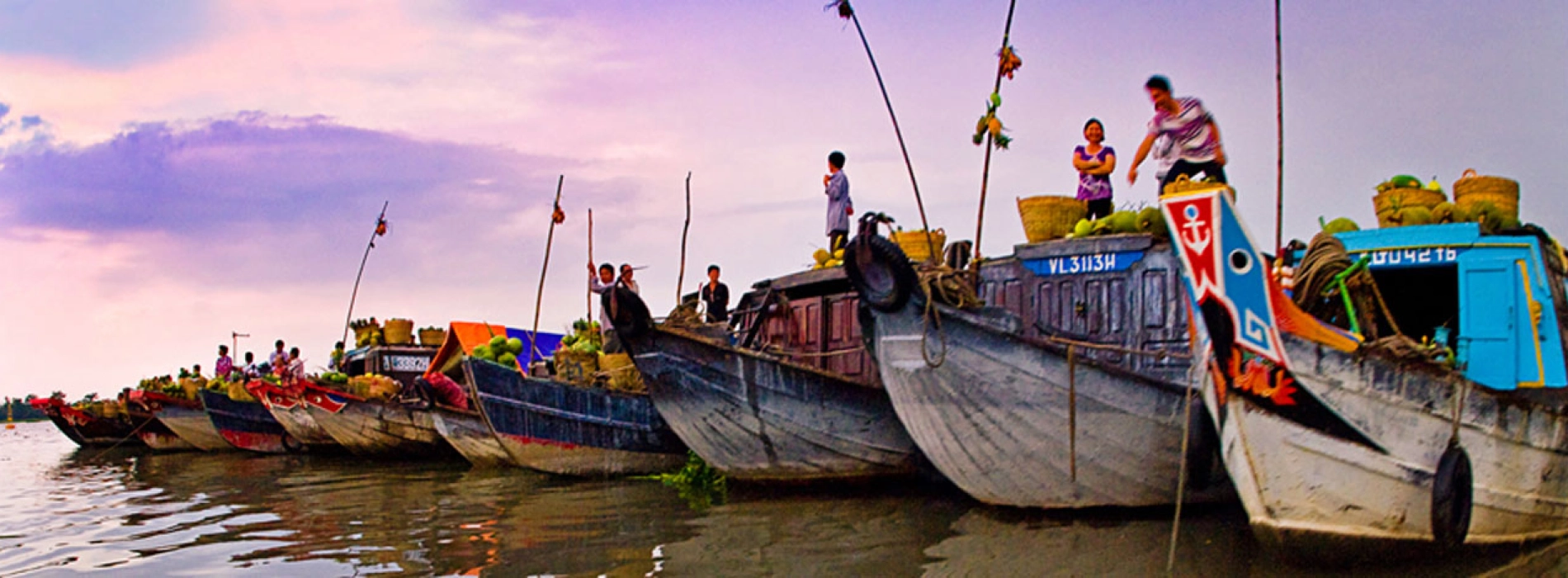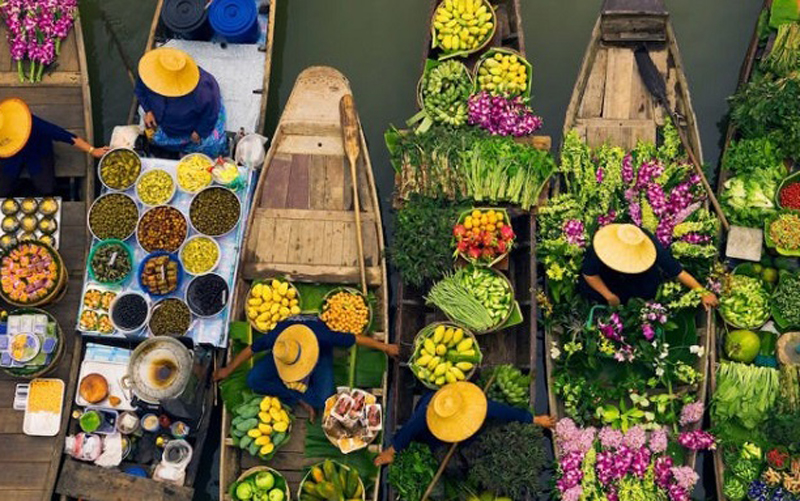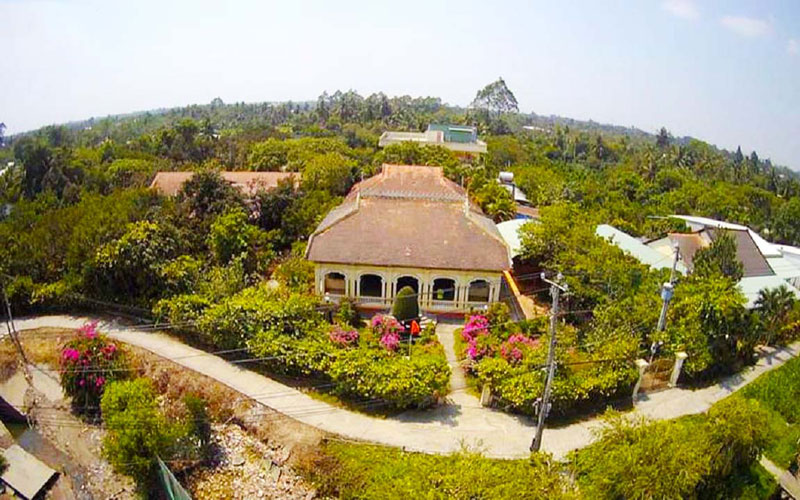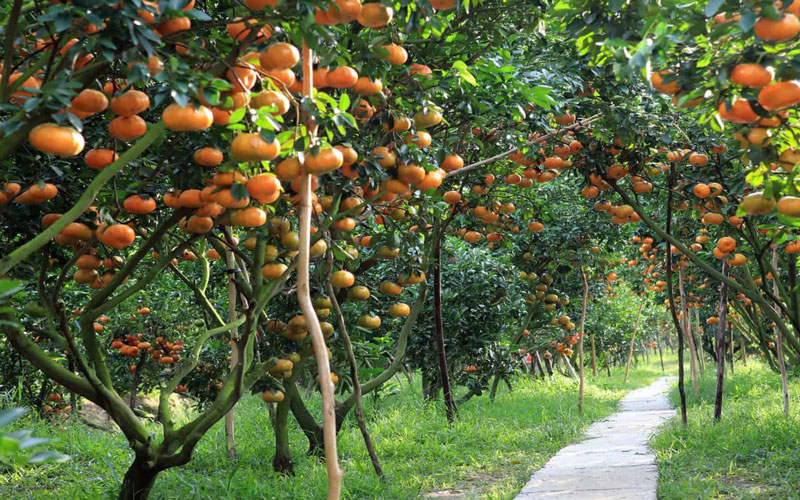Cai Be

Cai Be, nestled in the heart of the Mekong Delta within Can Tho province, Vietnam, is a captivating district that beckons with its unique blend of natural beauty and cultural richness. As the Mekong River meanders through this region, Cai Be comes alive with its vibrant floating markets, where boats adorned with an array of colorful produce create a picturesque spectacle. The district's lush orchards produce a bounty of tropical fruits and coconut candies, showcasing the agricultural prowess of the area. Navigating the intricate network of canals allows visitors to explore traditional villages, providing an intimate glimpse into the daily lives of the locals who depend on the river for their livelihoods. Beyond its natural allure, Cai Be boasts a cultural tapestry woven with ancient temples, pagodas, and historical sites, narrating the deep-rooted history and traditions of this enchanting corner of the Mekong Delta. Whether indulging in the sensory delights of its markets, immersing oneself in local life, or exploring its cultural heritage, Cai Be promises an enriching and unforgettable experience.
Cai Be's history is a captivating narrative that weaves the threads of the Mekong Delta's past, showcasing the district's enduring significance in Vietnam's historical mosaic. Stretching back through time, Cai Be's roots delve into ancient settlements that thrived upon the delta's fecund lands and labyrinthine waterways. As the colonial era dawned, the French imprint left an indelible mark, ushering in changes that would shape the district's trajectory. The district's cultural landscape flourished with the construction of temples and pagodas, standing as testaments to the spiritual values guiding its inhabitants. Yet, it was the intricate dance of trade that truly defined Cai Be's historical essence. Its bustling floating markets transformed the Mekong River into a bustling corridor of commerce, where boats laden with goods from near and far converged in a lively spectacle.
Amid economic development and modernization, the district's commitment to preserving its cultural heritage remains steadfast. Today, Cai Be's journey through time is epitomized by its thriving identity as a center of culture, trade, and tourism. Its floating markets remain a living legacy of its historical trade routes, while its temples and craft traditions offer windows into the past.
Visiting Cai Be is embarking on a journey not only through its own history but through the evolution of the Mekong Delta as a whole. The district's resilience, adaptability, and profound connection to its heritage continue to shape its destiny, inviting travelers to explore the layers of its past and present and to witness firsthand the confluence of history and modernity in this enchanting corner of Vietnam.
1. Cai Be Floating Market: A quintessential Mekong Delta experience, the Cai Be Floating Market is a bustling and colorful spectacle where boats laden with fresh produce, fruits, vegetables, and local goods gather for vibrant trade. Navigating through this lively market on the river provides an authentic glimpse into the region's traditional trading practices.

2. Dong Hoa Hiep Ancient Village: This charming village is renowned for its traditional crafts, particularly rice paper and coconut candy making. Visitors can witness artisans skillfully creating these delicacies using age-old techniques. It's a unique opportunity to engage with the local community and learn about their artisanal heritage.

3. Temples and Pagodas: Cai Be is dotted with temples and pagodas that reflect its spiritual side. The Cai Be Cathedral and the Cai Be Pagoda are notable sites where you can immerse yourself in the district's religious and cultural ethos, and enjoy moments of tranquility amid the vibrant surroundings.
.png)
4. Orchards and Fruit Gardens: Explore the lush orchards that define the landscape of Cai Be. Take a leisurely stroll or bike ride through these verdant havens, where tropical fruits like mangoes, bananas, and coconuts thrive. It's a delightful way to connect with nature and enjoy the bounty of the Mekong Delta.

5. Homestays and Cultural Immersion: One of the most enriching aspects of Cai Be is the opportunity to stay with local families through homestays. Engage in daily activities, learn about traditional cooking methods, and immerse yourself in the rhythms of rural life. This cultural immersion provides a deeper understanding of the district's heritage and a chance to forge meaningful connections with its residents.

Cai Be, located in the Mekong Delta region of Vietnam, experiences a tropical climate with distinct wet and dry seasons.
1. Dry Season (November to April): This is the most popular time to visit Cai Be, as the weather is relatively dry and pleasant. Temperatures are cooler during this period, ranging from around 22°C (72°F) to 32°C (90°F). Humidity levels are lower, and there is less rainfall. This is considered the peak tourist season, with comfortable weather for exploring the markets, orchards, and other attractions.
2. Wet Season (May to October): The wet season in Cai Be is characterized by higher temperatures and increased rainfall. Temperatures can range from 25°C (77°F) to 35°C (95°F) or higher. Rainfall is heaviest from June to August. The wet season can bring occasional heavy downpours and flooding, particularly in the later months. While the wet season might be less popular for tourists due to the rain, it can offer unique experiences like witnessing the vibrant green landscapes and experiencing the local way of life during this time.
To reach the captivating district of Cai Be in Vietnam's Mekong Delta, various transportation avenues await. If departing from the bustling city of Ho Chi Minh (Saigon), options include buses that traverse the picturesque Mekong landscape over a 3 to 4-hour journey. One can opt for a private car or taxi for a more personalized venture, promising comfort along the scenic route. From Can Tho, the heart of the delta, buses or even boats present opportunities to journey to Cai Be in roughly 2 to 3 hours. A shorter yet equally charming passage can be found from Vinh Long, accessible by buses or minibusses within a mere half-hour to an hour. Adventurers seeking an extraordinary expedition might consider Mekong River cruises departing from major cities like Ho Chi Minh, allowing for a serene exploration of the Delta's wonders, with Cai Be as a captivating highlight. Upon arriving in Cai Be, a world of floating markets, lush orchards, and cultural marvels awaits, inviting travelers to uncover the treasures of this enchanting corner of Vietnam.
Read more: Discovery Cebu & Bohol
Let's embark on a Cai Be Trip 2 days: Explore the Heart of the Mekong Delta, whe...
Explore the Mekong Delta's heart on Cai Be Tour Full-day: A rustic Mekong Delta...